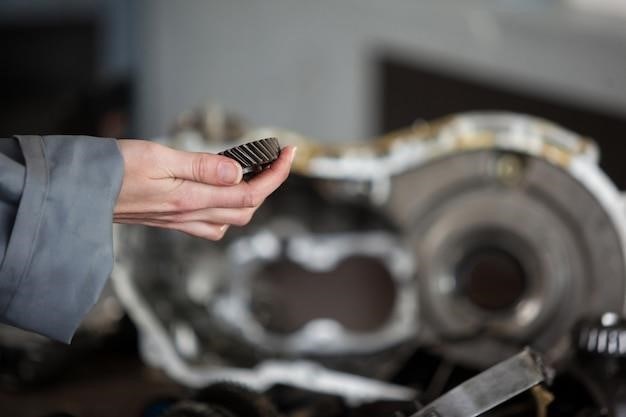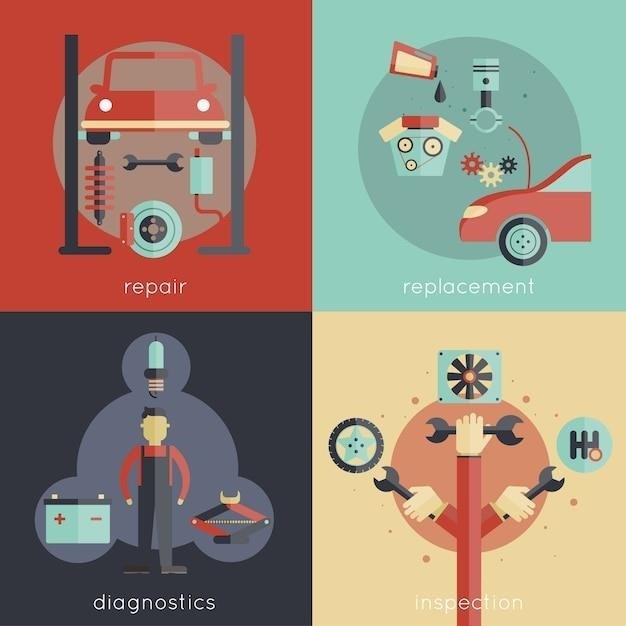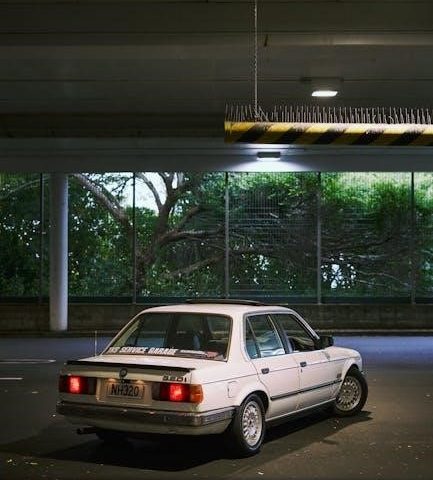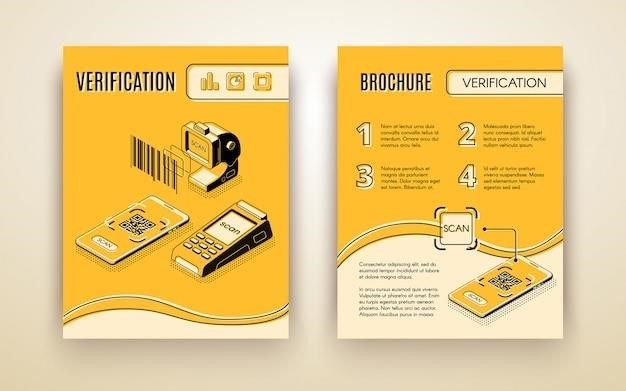Automatic to Manual Transmission Swap Cost
Converting an automatic transmission to a manual transmission can be a significant project‚ and the cost can vary widely. Factors such as the vehicle’s make and model‚ the type of manual transmission chosen‚ labor charges‚ and necessary parts will all influence the final price. Generally‚ expect to spend between $1‚500 and $5‚000 or more for a complete automatic to manual transmission swap.
Factors Influencing Cost
The cost of an automatic to manual transmission swap is influenced by a variety of factors‚ making it difficult to provide a fixed price. The vehicle’s make and model play a significant role‚ as some vehicles are more readily compatible with manual transmissions than others. The specific type of manual transmission chosen will also impact the cost‚ with newer or higher-performance transmissions generally costing more. Labor charges are another major component of the cost‚ varying depending on the mechanic’s expertise‚ location‚ and the complexity of the swap. Additionally‚ the cost of additional parts and components‚ such as a new clutch‚ flywheel‚ shifter‚ cables‚ and driveshaft modifications‚ can add up.
Vehicle Make and Model
The make and model of your vehicle significantly impact the cost of an automatic to manual transmission swap. Certain vehicles‚ like older Jeep models‚ are known for their relatively straightforward swap processes‚ making them more budget-friendly. However‚ newer or more complex vehicles often require specialized parts and more labor‚ leading to higher costs. For instance‚ some newer models might require modifications to the engine control unit (ECU) or other electronic components to accommodate the manual transmission. Additionally‚ the availability of compatible manual transmissions for a particular make and model can also influence the cost. If a specific manual transmission is rare or discontinued‚ finding one could be more challenging and expensive.
Type of Transmission Chosen
The type of manual transmission you choose can greatly affect the cost of the swap. Newer‚ more modern transmissions‚ like those found in high-performance vehicles‚ can be more expensive than older‚ more common transmissions. For example‚ a modern 6-speed manual transmission might cost significantly more than a traditional 5-speed. Additionally‚ the availability and condition of the chosen transmission will also play a role. Finding a used transmission in good condition might be more affordable than buying a new one. However‚ ensure the used transmission is compatible with your vehicle and in good working order before purchasing it.
Labor Charges
Labor charges are a significant part of the overall cost of an automatic to manual transmission swap. The amount of time and expertise required for the conversion will vary depending on the vehicle’s make and model‚ the complexity of the swap‚ and the mechanic’s experience. A more complex swap‚ involving modifications to the driveshaft‚ wiring‚ and other components‚ will require more labor time and‚ therefore‚ higher labor costs. Independent mechanics or smaller shops may offer more competitive rates compared to larger dealerships‚ but it’s essential to choose a reputable mechanic with experience in transmission swaps.

Additional Parts and Components
Beyond the new manual transmission itself‚ several other parts and components may be needed for a successful automatic to manual swap. These can include a new clutch‚ flywheel‚ pressure plate‚ throw-out bearing‚ shifter‚ cables‚ pedal assembly‚ and possibly even a modified driveshaft. In some cases‚ modifications to the wiring harness or the engine control unit (ECU) might be necessary‚ adding further cost. The specific parts required will vary depending on the vehicle and the type of manual transmission being installed. Researching the specific parts needed for your vehicle can help estimate the overall cost of the conversion.
DIY vs. Professional Installation
The choice between performing the automatic to manual transmission swap yourself (DIY) or hiring a professional mechanic can significantly impact the overall cost. DIY swaps can save money on labor charges but require a considerable amount of mechanical knowledge‚ tools‚ and time. You’ll also need to be comfortable sourcing and ordering the necessary parts. On the other hand‚ professional installation guarantees proper installation‚ ensuring the transmission functions correctly and avoiding potential warranty issues. While professional installation will increase the overall cost‚ it provides peace of mind and can save you time and hassle in the long run. Weighing the benefits of DIY vs. professional installation based on your mechanical skills‚ available time‚ and budget is essential.
Average Cost Range
While the cost of an automatic to manual transmission swap can vary greatly‚ a general estimate can be helpful. Based on various online resources and real-world examples‚ the average cost for such a swap can range from $1‚500 to $5‚000 or more. This range encompasses the cost of parts‚ labor‚ and any additional modifications required. Factors such as the vehicle’s make and model‚ the type of manual transmission chosen‚ and the complexity of the installation can significantly affect the final price. It’s essential to research specific costs for your vehicle and consider the potential for additional expenses before embarking on this project.
Case Studies
Real-world examples provide valuable insights into the costs associated with automatic to manual transmission swaps. One online forum post detailed a Jeep 4.0L engine swap where the total cost was approximately $300. Another case study involved a 1989 Jeep XJ 4.0L I6‚ with an AX-15 swap and NP231 transfer case‚ costing around $2‚500. These examples highlight the wide range of costs‚ influenced by factors such as the vehicle’s age‚ make‚ and model‚ as well as the complexity of the swap. It’s essential to consider these case studies and research specific costs for your vehicle to get a realistic estimate of the potential expense.
Real-World Examples
To gain a better understanding of the cost variations in automatic to manual transmission swaps‚ let’s delve into some real-world examples. One individual documented their experience with a Nissan 240SX‚ spending approximately $400-$500 for parts‚ oil‚ tools‚ and labor on a 5-speed manual transmission swap. Another enthusiast‚ converting a Honda Civic‚ reported a total cost of under $2‚500‚ including a new transmission‚ driveshaft modifications‚ and installation. These examples illustrate the potential cost range and highlight the importance of considering individual vehicle specifics and labor costs when estimating the total expense of such a swap.
Cost Breakdown
The cost of an automatic to manual transmission swap can be broken down into several key components. The most significant expenses typically include the cost of the new manual transmission itself‚ which can range from several hundred dollars to several thousand dollars depending on the make‚ model‚ and year of the vehicle. Labor costs for the installation can vary widely based on the complexity of the swap and the location of the mechanic. Additionally‚ there may be costs associated with modifying the driveshaft to accommodate the new transmission‚ purchasing additional parts like a new clutch‚ and potentially needing a new wiring loom or ECU.
Parts Cost
The cost of parts for an automatic to manual transmission swap can vary significantly depending on the specific vehicle and the type of transmission being installed. The new manual transmission itself will be the most expensive component‚ with prices ranging from a few hundred dollars to several thousand dollars. Other parts that may be required include a new clutch‚ a clutch pedal assembly‚ a shifter‚ a new driveshaft or modifications to the existing one‚ and potentially a new wiring loom and ECU. Additionally‚ if the vehicle is older‚ you may need to purchase replacement parts for the transmission mounting system and any associated components.
Labor Cost
Labor costs for an automatic to manual transmission swap can be substantial‚ as the process is complex and time-consuming. The amount of time needed to complete the conversion will depend on the specific vehicle and the experience level of the mechanic performing the work. On average‚ you can expect to pay between $800 and $1‚500 for labor‚ but this can vary greatly depending on the location and reputation of the shop. If you choose to perform the swap yourself‚ you can save on labor costs‚ but it’s important to have a good understanding of automotive mechanics and to use proper safety precautions.
Driveshaft Modifications
In many cases‚ the driveshaft will need to be modified or replaced when converting from an automatic to a manual transmission. This is because the length and angle of the driveshaft may not be compatible with the new manual transmission. Modifications can involve shortening‚ lengthening‚ or re-balancing the existing driveshaft. If the existing driveshaft cannot be modified‚ a new one may need to be purchased. The cost of driveshaft modifications can range from $150 to $500 depending on the complexity of the work and the specific parts required. It’s essential to factor this cost into your overall budget when planning your automatic to manual transmission swap.
Additional Considerations
Beyond the core components and labor‚ there are additional considerations that can affect the cost of an automatic to manual transmission swap. These include the need for a new wiring harness or modifications to the existing one to accommodate the manual transmission. You may also need to replace the ECU (Electronic Control Unit) depending on the year and model of your vehicle. Some swaps may require modifications to the clutch pedal assembly‚ shifter‚ and associated components. Additionally‚ you’ll need to factor in the cost of fluids‚ such as transmission fluid‚ brake fluid‚ and clutch fluid. Finally‚ consider the cost of any necessary alignment after the installation is complete. While these factors might seem minor‚ they can add up and impact the overall cost of your project.
Potential Benefits
While the cost of an automatic to manual transmission swap can be significant‚ there are potential benefits that may make the investment worthwhile. One of the most notable benefits is improved fuel efficiency. Manual transmissions generally provide better fuel economy than automatics‚ as they allow for more precise control over engine speed and gear selection. This can lead to noticeable savings at the pump‚ particularly for drivers who frequently commute or engage in long-distance travel. Another benefit is an enhanced driving experience. Manual transmissions offer a more engaging and connected feel‚ allowing drivers to actively participate in the driving process. The ability to shift gears manually provides greater control over the vehicle’s acceleration and deceleration‚ which can be especially appreciated by enthusiasts and those who enjoy a more spirited driving style. Finally‚ a manual transmission can provide increased control‚ particularly in off-road situations. The ability to select specific gears and to easily control engine speed can be advantageous when navigating challenging terrain.

Improved Fuel Efficiency
One of the most compelling reasons to consider an automatic to manual transmission swap is the potential for improved fuel efficiency. Manual transmissions generally offer better fuel economy than their automatic counterparts. This is because manual transmissions give drivers greater control over engine speed and gear selection‚ allowing them to optimize fuel consumption. By manually shifting gears‚ drivers can avoid the “slippage” that occurs in automatic transmissions‚ where the transmission loses some power during gear changes. This slippage results in slightly less efficient fuel usage. Furthermore‚ manual transmissions allow drivers to select the optimal gear for different driving conditions. For example‚ in situations where fuel efficiency is paramount‚ drivers can select a higher gear to reduce engine revs and minimize fuel consumption. The ability to manually control engine speed and gear selection can lead to noticeable savings at the pump‚ particularly for drivers who frequently commute or engage in long-distance travel.
Enhanced Driving Experience
Beyond potential fuel savings‚ a manual transmission swap can significantly enhance the overall driving experience. For many enthusiasts‚ the act of shifting gears is an integral part of the driving experience. It provides a sense of control and engagement that automatic transmissions simply cannot replicate. The ability to select gears manually allows drivers to tailor their driving style to specific conditions. Whether it’s smoothly accelerating through traffic or maximizing performance on a winding road‚ a manual transmission offers a level of control and responsiveness that automatic transmissions often lack. Moreover‚ the act of shifting gears can be a rewarding and engaging aspect of driving‚ especially for those who appreciate the tactile feedback and involvement it provides. Many drivers find that a manual transmission enhances their enjoyment of driving by making them more actively involved in the process‚ creating a more fulfilling and engaging experience behind the wheel.
Increased Control
One of the primary advantages of a manual transmission is the increased control it provides over the vehicle’s power delivery. Unlike automatic transmissions‚ which automatically shift gears based on various factors‚ manual transmissions allow drivers to select the appropriate gear for any driving situation. This level of control is particularly beneficial in situations where precise power delivery is crucial‚ such as when driving on challenging terrain or navigating tight corners. With a manual transmission‚ drivers can choose to downshift for more engine braking‚ providing greater control when descending hills or slowing down for tight turns. They can also select a lower gear for more power when accelerating uphill or merging onto a highway. This ability to precisely control the vehicle’s power output enhances the overall driving experience‚ especially for those who value control and responsiveness.
Potential Drawbacks
While an automatic to manual transmission swap can offer several benefits‚ it’s crucial to acknowledge potential drawbacks. One significant consideration is the increased complexity of a manual transmission. Manual transmissions require drivers to actively engage in the shifting process‚ which can be more demanding‚ especially in stop-and-go traffic or during long commutes. Additionally‚ maintaining a manual transmission can be more involved‚ requiring regular clutch adjustments and fluid changes. Furthermore‚ the cost of repairing a manual transmission‚ particularly if the clutch needs replacement‚ can be higher than the cost of repairing an automatic transmission. These factors should be carefully considered before undertaking a manual transmission swap‚ as they can impact the overall driving experience and long-term ownership costs.
Increased Complexity
One of the primary drawbacks of converting an automatic transmission to a manual is the inherent increase in complexity; Manual transmissions require drivers to actively engage in the shifting process‚ which involves coordinating clutch operation‚ gear selection‚ and throttle control. This can be a more demanding and time-consuming task‚ especially in stop-and-go traffic or during long commutes. Drivers accustomed to the convenience of automatic transmissions may find the transition to manual shifting less enjoyable and potentially more stressful. Additionally‚ the increased complexity of a manual transmission system may necessitate more frequent maintenance‚ such as clutch adjustments and fluid changes‚ adding to the overall cost of ownership.


